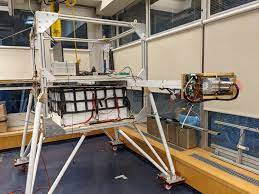The report looks at three possible ways to cool the air: Putting heat-reflecting particles in the stratosphere, changing the brightness of ocean clouds and thinning high clouds.
The U.S. must seriously consider the idea of tinkering with the atmosphere to cool a warming Earth and accelerate research into how and whether humanity should hack the planet, the National Academy of Sciences said Thursday.
The report by the academy, set up by Abraham Lincoln to provide the government with expert advice, doesn’t recommend carrying out solar geoengineering to bounce heat back to space. At least not yet.
But an emergency plan needs to be explored, the report says, because climate change-driven extreme weather has worsened since the last time the academy looked at the highly-charged issue in 2015. That requires coordinated research into whether air-tinkering technology would work, its potentially dangerous side effects, its ethics and the potential for political fall-out.
The report looks at three possible ways to cool the air: Putting heat-reflecting particles in the stratosphere, changing the brightness of ocean clouds and thinning high clouds.
Climate engineering is a really dumb idea, but it might not be as dumb as doing nothing at this point or continuing to do what we’ve been doing, Scripps Institution of Oceanography atmospheric chemist Lynn Russell, a report co-author, told The Associated Press. “It has a lot of risks and those are important to learn as much as we can about.”
The panel recommended ramping up research spending by several fold to $40 million a year, along with “exit ramps” to end study if an unacceptable risk is found.










